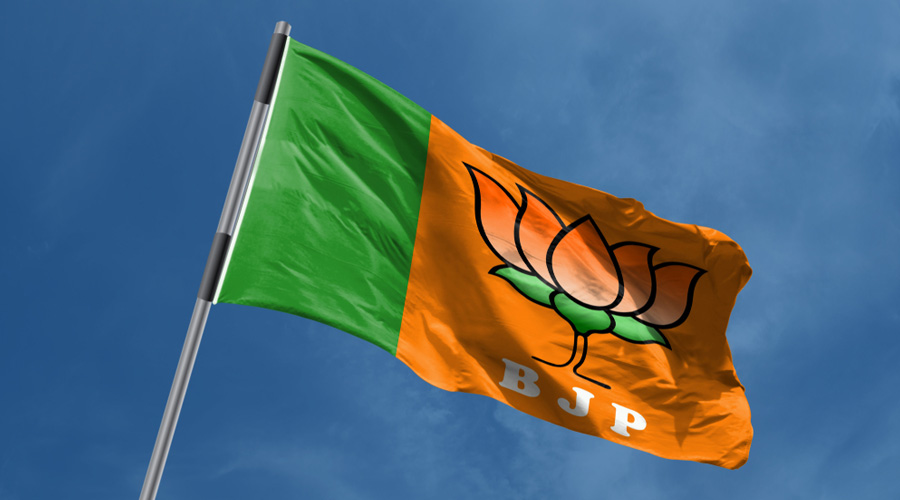The BJP is eying a rare social coalition including 'upper' castes and a majority of backward classes in Bihar to power its bid to vanquish in the 2024 Lok Sabha polls the formidable RJD-JD(U) alliance, which had inflicted a crushing defeat on it in the 2015 assembly elections.
While Lalu Prasad Yadav's Rashtriya Janata Dal (RJD) may be the strongest party in the Bihar ruling alliance, the BJP believes that its road to success lies in the dismantlement of the support base of Chief Minister Nitish Kumar's Janata Dal (United), which has long enjoyed the backing of a collection of non-Yadav backward castes and some Dalit communities.
Union Home Minister Amit Shah will on Sunday attend programmes to mark the birth anniversary of the great Maurya emperor Ashoka.
On his fourth visit to Bihar in the last seven months, Shah's programmes are seen as part of the BJP's ambitious drive to woo the numerically strong Kushwaha (Koeri) community, which believes that the emperor came from their stock.
Believed to be around 7-8 per cent of the state's population -- the second highest after the Yadavs -- the backward caste has often backed Kumar in the polls.
By appointing Samrat Choudhary, a Kushwaha, as its state unit president, the BJP has shown its intent to go all out to court the community.
Choudhary said the Bihar chief minister has done nothing for the community and only "betrayed" it, asserting that the BJP will get support from various communities in the state, which sends 40 MPs to the Lok Sabha.
With both the Yadavs and the Kurmis, the caste Kumar comes from, having had their chief ministers, there is a view among the Kushwahas that it is their turn now. The BJP may exploit this to its advantage, party leaders said.
Nagmani, a veteran Bihar politician and a bitter critic of the RJD-JD(U) leadership, said people are fed up by the over-three-decade rule of "Lalu-Nitish". The Yadavs and the Kurmis have had their share in power but the Kushwahas have been left behind, he said. He also hails from the Kushwaha community.
Besides working on getting the Kushwahas' support, the BJP is working on a wider plan to expand its support base among many numerically smaller castes -- clubbed under the extremely backward class (EBC) -- that together counts a lot in swinging the balance of elections.
That is why, a BJP leader noted, the party nominated Shambhu Sharan Patel to the Rajya Sabha last year. Patel enjoyed little recognition within the party's own organisation but the fact that he came from the Dhanuk caste, a part of the EBC, tilted the scale in his favour.
The BJP's perceived outreach to parties such as the Vikassheel Insaan Party headed by Mukesh Sahani, who claims to represent numerous subcastes that traditionally worked as boatmen, are seen as part of this effort.
It has also maintained cordial ties with Lok Janshakti Party (Ram Vilas) leader Chirag Paswan who enjoys traction among the Paswans, the most populous Dalit community in the state.
While 'upper castes' and most of the backward classes have come together in backing an alliance, as seen during the long BJP-JD(U) tie-up under Kumar's leadership, they have traditionally been backers of different parties.
The BJP has now set its eyes on achieving the rare feat of bringing them together in supporting the saffron party.
The BJP is likely to continue with its political outreach to such communities to ensure that its support base is strong enough to ensure that factors like Prime Minister Narendra Modi's appeal makes maximum impact in the state, as often seen in neighbouring Uttar Pradesh.
In Uttar Pradesh, it has succeeded in stitching together a rainbow social combination of 'upper' castes, a majority of backward communities and a large chunk of Dalits to quell any united opposition challenge, as seen in the 2019 polls when the Samajwadi Party and the Bahujan Samaj Party joined hands.
In Bihar, the backward castes have been traditionally with "Mandal" parties of socialist stock, a pattern the BJP is trying hard to break for the coming polls.
Just as in 2014, the BJP is likely to fight the 2024 Lok Sabha polls largely on its own in the state with alliance with relatively smaller parties.
However, unlike in 2014, the RJD and the JD(U) are set to be together this time, along with the Left parties and the Congress.
The BJP-led NDA had won 31 of the state's 40 seats in 2014 with nearly 39 per cent of the votes. Political watchers believe that a similar sweep next year will require the addition of more votes against a combined opposition.
Except for the headline, this story has not been edited by The Telegraph Online staff and has been published from a syndicated feed.











